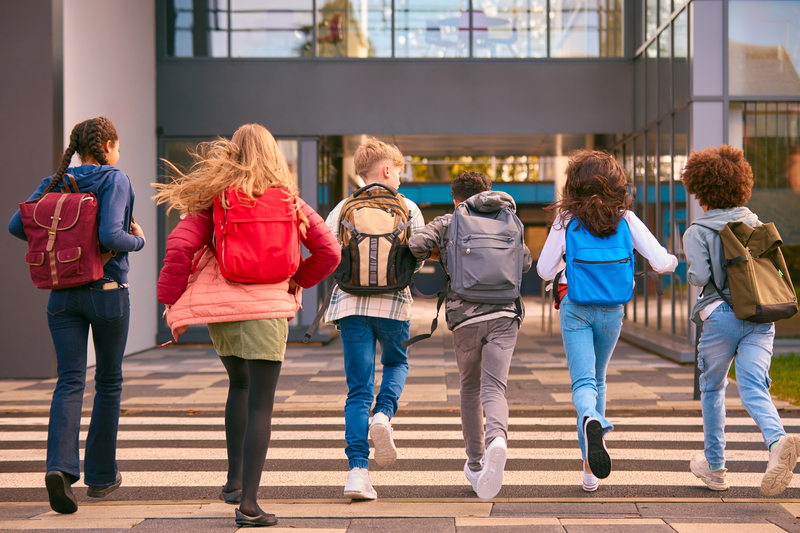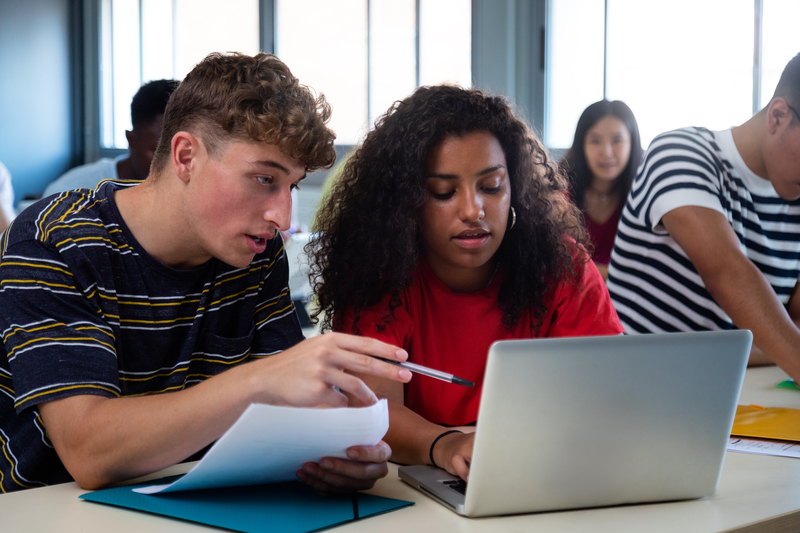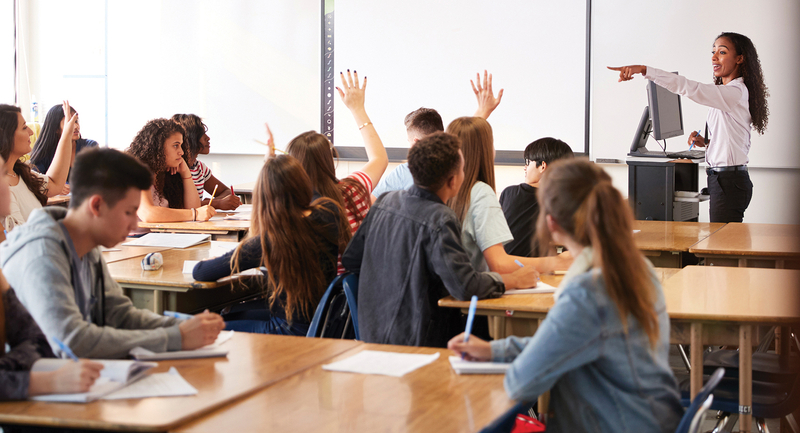Water pollution. Global warming. Wildlife conservation. Many students, even elementary students, have heard these environmental terms. But even though students are aware of environmental issues, they might not think that the issues directly affect them.
So what's the best way to teach students that problems concerning the environment affect all individuals and communities, including their own? Try engaging them in activities focused on local environmental issues. "I always tell my [education] students that teaching about the rainforest is great, but why should students know more about that than they do about the animals and plants right here in Maryland?" says Sarah Haines, director of the Center for Science and Mathematics Education at Towson University in Maryland.
Learning locally prepares students to act globally.
Go Outside
Outdoor classrooms or schoolyard habitat projects provide excellent opportunities for teaching students, especially elementary students, about environmental education (EE) on a local level, says Haines. One example she points to is a schoolyard habitat project that was implemented at Morrell Park Elementary/Middle School in Baltimore, Md., with the help of the Chesapeake Bay Foundation. Through this collaboration, students created an outdoor classroom on school grounds. They restored a wetland habitat, created a nature trail, placed wetland plants near storm drains to prevent runoff, and learned how their work would help to improve the environment and the health of the Chesapeake Bay.
"On the Schoolyard Habitat planting day, the students were obviously extremely proud of what they had done," Haines says. Students led the local media, community members, parents, and others throughout the habitat, explaining their project.
Analyze the Issues
Laura Bovitz, a county 4-H agent for the Rutgers Cooperative Extension in North Brunswick, N.J., developed an environmental town meeting activity to encourage middle school students to think about the delicate balance between meeting the needs of the local community and protecting the natural environment. In this activity, the teacher presents students with a controversial environmental issue, such as the proposed construction of a waste-to-energy facility. Working in groups that represent various stakeholders— town council members, environmental professionals, union workers, concerned citizens, and so on—students research, prepare, and present their stakeholder positions at a mock town council meeting. In this case, the union workers might present details on how the construction of the site would bring much-needed jobs to the community, and the environmental professionals might present information on how the construction might negatively affect the surrounding wetlands and wildlife in the area.
For such a project to succeed, Bovitz says teachers must do their homework, because once students start digging into these issues, they'll have an abundance of questions. Bovitz also recommends allowing students to collaborate. "Sometimes students are hesitant to role play. Doing it in a group, rather than individually, makes students more comfortable," she says. Bovitz adds that students often learn to compromise. They may begin with strong opinions either for or against the proposal, but in most cases, students reach a compromise at the end when it comes to building the facility and conserving the environment.
Demonstrate the Power of One
While groups of people often have to come together to make tough local environmental decisions, individuals can take important steps to improve the environment on their own. Kimberly Heddings, a high school chemistry teacher for Fairfax County Public Schools in Virginia, developed an activity that challenges students to calculate their own ecological footprints and develop plans to reduce those footprints.
Students begin by taking a quiz (available athttp://myfootprint.org) that assesses the environmental impact of their consumption of energy, goods, services, food, housing, and the amount of waste that is produced and must be absorbed by the Earth. Then, students develop plans to decrease their environmental impact on the Earth.
Through the activity, students discover a number of ways to make local changes such as eating fresher, local foods in order to reduce the fossil fuels used in transport and the fuels and materials used to process and package the foods. "Another example that comes to mind is carpooling," says Heddings.
Heddings says the biggest misconception students have about environmental issues is that they are powerless. "I think many students previously felt that because they were 'only kids' they couldn't do anything meaningful to help and protect the environment. This project helps them realize that even little changes in their daily lives can make a big difference."
Tap Into Resources
Before beginning locally-focused EE, teachers should try to help students get the facts straight. Whether students have erroneous information about greenhouse gases or a misunderstanding about watersheds, the lack of quality science information may be one culprit, says Heddings.
"For the hot topics in environmental chemistry, I usually start class by asking students what they know or what they've seen or read in the news about those topics. Several discussions have worked out nicely because students have mentioned articles found in magazines like Cosmopolitan orSports Illustrated; that leads to a very important discussion about reputable science sources," Heddings says.
Teachers should communicate with parents to dispel myths about environmental issues as well, says Haines. "Education is key—educating parents and the public, not just the kids," she says.
A number of quality EE professional development programs can assist teachers in teaching local environmental lessons (see the "Resources" section at the end of this article). Bovitz encourages teachers to start by contacting their local 4-H programs. "Nationally and statewide, 4-H offers a lot of EE resources through curriculum and programming," she says.
Another resource on the local level is the Department of Natural Resources (DNR). Martha Andreski, an environmental educator for 27 years in public and private schools, urges teachers to contact their local DNR for resources, training, and locally focused lesson plans. For example, Andreski, who lives in Mt. Pleasant, S.C., says that her local DNR offers educational information on loggerhead sea turtles and coastal erosion—topics specifically pertaining to the coastal Carolina area.
Haines also recommends Project Learning Tree's (PLT) educator workshops. "There is an early childhood curriculum, a preK–8 curriculum, and several 9–12 curricula that teachers can be trained in. All the materials have been rigorously reviewed and evaluated, and are quite popular," says Haines.
Not all teachers and schools have the resources to create elaborate EE lesson plans and activities. But Haines says that there are little ways that teachers can incorporate EE into the classroom. "Outdoor classrooms are great, but not every school can take that step," Haines says. "I recommend just getting kids outside. They can learn about EE just by taking a walk around the schoolyard as long as the teacher gets them to use their observation skills. You can use the schoolyard to: measure biodiversity of plants, measure biodiversity of animals, do a habitat assessment, calculate a water budget and runoff in the schoolyard, watch birds, look for invertebrates—you would be surprised how much a teacher can do just by getting out of the four walls of the classroom."
Additional Resources
Websites
Publications
Bovitz, L. (2008.) An environmental town meeting. Science Scope, 32(4): 32–36.
Haines, S. (2006.) Outdoor classrooms—planning makes perfect. Science and Children, 43(8): 44–48.
Heddings, K. S., & Frazier, W. M. (2009.) Shrinking our footprints. The Science Teacher, 76(6): 25–28.
Blake, R. W., Haines, S., & Frederick, J. A. (2010.)Inside-out: Environmental science in the classroom and the field, grades 3–8. Arlington, VA: NSTA Press.








